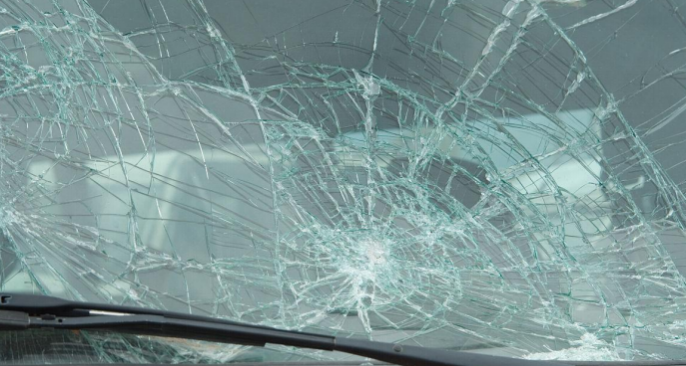Common Car Troubles: The Hidden Physics Behind Them
You're driving, enjoying the morning sunlight or a relaxing evening, when suddenly—"ding"! A sharp sound and something hits your windshield. Before you can react, the glass cracks. You might wonder, where did that thing come from? Why did it hit your windshield of all places? This isn't just about "bad luck"; there's some interesting physics at play behind the flying rocks and our windshields. This article explores the "physical battle" that happens between those flying stones and our windshields.

First, imagine you're driving, and there's a car ahead of you going at 30 mph. Inside the car, a child is holding a bouncy ball. The child suddenly decides to throw the ball out of the window. When the child throws the ball, its horizontal speed is the same as that of the car. You can think of it like you're chasing the car, and the ball is released into the same trajectory. But as the ball flies through the air, it will be affected by air resistance. Air acts like an invisible wall, coming at the ball and trying to slow it down. This is similar to how water resistance makes it hard to swim fast in a pool. The ball slows down, but it still stays in sync with the car.
Now, let's get back to the main topic. Imagine there's a truck on the road carrying loose gravel, and one of the stones falls out of the truck. First, when the stone hits the ground, there is friction between the stone and the surface. This friction gradually slows down the stone's horizontal speed. So, the stone's flight distance and speed are affected by the friction of the ground, causing it to slow down, much like how a skateboard slows down when you push it across the grass. But that's not the only issue. When you throw an irregularly shaped stone, it will spin in the air like a rotating top. This spinning makes its motion path more complex and could even change its angle and position when it lands. At this point, many people might think,
"What about the law of conservation of energy? Will there be any problems?" There's not much to worry about. It's similar to when you spin a top with your hand and suddenly release it; the top can fly high. The spinning motion turns into upward movement, causing the stone to jump higher and leave the ground. As a result, it's more likely to hit your windshield, giving you a "surprise."

Most windshield damage is often related to how stones on the road get kicked up by vehicles. You might wonder, "How did that stone end up flying toward my car? It should have bounced to the car behind me." But the situation isn't that simple. A car's tyres roll along the road and the friction between the tyre and the road causes small stones on the ground to get caught in the tyre tread. At this moment, the stone is stationary relative to the ground, looking like an ordinary stone lying quietly on the road. But if the stone stays in the tyre long enough, it will be affected by the bending force of the rubber on the tyre. When the tyre bends enough, the stone will be flung into the air. The "magic" here is that the stone's speed is very low, with almost no horizontal speed, only vertical motion. This means that as soon as the stone flies up. It's very likely to hit your car's windshield. If the stone happens to fly past your window at a certain angle, you might become that "unlucky" driver.

So, how can you avoid having your windshield hit by a flying stone? The solution is very simple: maintain distance from the car ahead. It's like keeping a certain distance from the water flow in a pool to avoid getting splashed in the face.
When driving, don't follow too closely— leave yourself plenty of space. If there's a car ahead, especially a truck or one carrying gravel, make sure to keep a safe distance, giving flying stones enough time and space to avoid heading toward your window.
While a cracked windshield can be very annoying, at least you can learn some interesting facts about the physical world from the experience. Next time you're driving, remember to give yourself enough distance and avoid any "close encounters" with flying stones.
(Writer:Seli)

